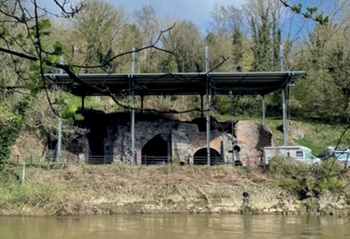Biodiversity net gain with related updates and terms explained
[edit] The origins of biodiversity interventions
[edit] Origins of global biodiversity interventions
The creation of the United Nations Framework Convention (UNFC) at the Rio Summit created three intrinsically linked strands, the first of which is possibly most well known, while the second relates directly to biodiversity:
- Convention on Climate Change (UNFCC), most commonly referred to as COP or UNCCCOP.
- Convention on Biological Diversity (UNCBD or CBD), also sometimes referred to as COP, BIOCOP, or EXCOP.
- The UN Convention to Combat Desertification (UNCCD), also sometimes referred to as COP.
In 2020, a UN report noted an unprecedented rate of biodiversity loss, with around 1 million species threatened with extinction. The report highlighted the need for policy interventions, including biodiversity offsetting and mitigation measures.
[edit] Origins of UK biodiversity interventions
The Environment Act, based on the Environment Bill (originally published in July 2018 but delayed due to Brexit), received royal assent on November 9, 2021. The Act followed UN reports and increased government awareness, including studies showing the UK having lost more biodiversity than any G7 country. The Environment Act replaced many aspects of UK legislation that were covered by European law prior to Brexit and were no longer applicable after the UK left the European Union.
The general aims of the Environment Act remained focused on reducing landfill, improving air and water quality, and protecting biodiversity and wildlife. It set out a number of components relating to biodiversity net gain (BNG), including amending the Town and Country Planning Act (TCPA), requiring a minimum 10% biodiversity gain, significant on- and off-site habitat to be secured for at least 30 years, an on- and off-site delivery approach with a biodiversity credit scheme, and a national register for net-gain delivery sites.
[edit] Biodiversity Net Gain and planning updates
[edit] Biodiversity Net Gain (BNG) updates October 2024
As of September the publicly accessible biodiversity register showed 11 registered gain sites, though there maybe many more in progress they do not appear until registered. It costs £639 to register a biodiversity gain site and the turn around is around 6 weeks. To some extent the system is reliant on offsite units being available, partly because of the number of sites that are unable to achive the 10% onsite gain. In September, Housing Today reported 'Loopholes allow developers to ‘opt out’ of new biodiversity laws, experts warn' the article discusses the use or mis-use of possibilities to opt-out of the net gain requirements. NGO's and business groups wrote to Angela Rayner, the housing secretary, and Steve Reed, the environment secretary saying exemptions in the Biodiversity Net Gain (BNG) policy framework were “threatening progress” around sustainable development.
This balance between the supply of the gain sites and the demand for the units was still emerging in the initial months since the regime became mandatory. Hope has been that as more applications are submitted that require offsite units it will become clearer whether demand outgrows supply. The reserach above suggets demand is low because of the routes to avoiding the obligations. If demand does increase but the supply of gain sites does not the scheme would need resort to the use of statutory credits, which in the initial scheme were discouraged through the pricing mechanism.
[edit] Biodiversity Net Gain (BNG) updates July 2024
Research published by the Green Finance Institute indicated only 0.5% of planning applications submitted since February 2024 had been subject to BNG. In August 2024 they published the 'Biodiversity Net Gain: A Roadmap for Action' 'As of 31 July 2024, the biodiversity gain sites register lists nine sites, totalling under 300 hectares, well below estimates of 6,700 hectares of off-site habitat being created each year. Early feedback also suggests that demand for sites is low due to exemptions and other routes being relied on to circumvent BNG obligations. Even fewer of these have been approved, reflecting critical gaps in the capacity and resources of Local Planning Authorities (LPAs).'
Also in July as the Labour government looked toward achieving their housebuilding targrt of 1.5 million new homes in their 5 years in office a consultation was launched on significant chnages in the NPPF. Changes that are considered by many as an easing of planning restrictions in order to promote housebuilding, potentially on newly defined grey land in the green belt areas, via brownfield passports and the newly term golden rules of development. The consulation included some 106 questions, which can be found in the article consultation on proposed reforms to NPPF and other changes to the planning system. The NPPF consultation closed on 24 September 2024 but what seems clear is that with a potential for increased levels of housebuilding in a wider choice of sites, ensuring the BNG policy functions as it was intended will become increasingly crucial in protecting and ideally enhancing natura capital across the UK.
[edit] Biodiversity Net Gain (BNG) updates May 2024
On 17 May 2024 the National Audit Office published their report on value for money 'Implementing statutory biodiversity net gain'. The report examined the progress Defra and Natural England had made in implementing statutory BNG, and whether they have done so in a way that maximised benefits and effectively managed risks. It was produced in response to a request from the Environmental Audit Committee to contribute to its inquiry into the role of natural capital in the green economy covering: The government’s approach to implementing statutory BNG, and how it expects the policy to contribute to its biodiversity objectives. How the government designed and launched statutory BNG. Key risks the government to be managed to maximise the value statutory BNG can provide. And recommendations aimed at supporting Defra and Natural England to maximise value and manage risks to statutory BNG as policy implementation becomes business as usual.
The conclusions of the report highlighted the priority Defra gave to launching the policy despite having to accept some significant risks to its effectiveness, which must now be managed as the policy progresses. The report indicates that Defra launched the policy before having all the elements in placeto ensure statutory BNG was a success in the long term. It concluded that there is a long way to go before there is confidence that damage to biodiversity through development will not be understated and that the benefits of biodiversity enhancements will actually be delivered. For its market-led approach to work, Defra needs the market to scale up to meet demand, and for statutory biodiversity credits to deliver biodiversity when the market fails to do so.
Much of the BNG details are managed by local authorities through the planning process, including ensuring compliance and enforcement. At the time of the report there was doubt about whether local authorities would be able to discharge these duties effectively. In addition, it is not clear whether Defra will have sufficiently granular monitoring data to assess policy performance. Without these, Defra does not have assurance that the statutory BNG policy will be delivering biodiversity outcomes and value for money for taxpayers.
[edit] When does Biodiversity Net Gain (BNG) apply?
Biodiversity Net Gain (BNG) is mandatory for major developments from February 12, 2024, and for small sites or minor developments from April 2, 2024, and for Nationally Significant Infrastructure Projects from 2025 (planned). Minor residential development are defined as one to nine dwellings, inclusive, on a site having an area of less than one hectare, or, where the number is not known, a site area of less than 0.5 hectares. For non-residential, where the floor space to be created is less than 1,000 square metres or where the site area is less than one hectare. Developments that exceed this, so 10 dwellings or more, are defined as major developments, with these exemptions; development impacting a habitat area below 25 m2 or 5m for linear habitats such as hedgerows, householder planning applications, and small scale self-build custom buildings.
[edit] Biodiversity Net Gain in brief
Biodiversity Net Gain (BNG) is based on the statutory biodiversity metric of biodiversity units (area, hedgerow, and watercourse units) that need to be calculated prior to a development taking place, along with how many units are needed to replace units of habitat lost through the development.
Developers need to achieve a 10% BNG through the creation or enhancement of habitats to be evidenced via a biodiversity gain plan, which can be submitted to the local planning authority after the planning application has been approved. The assessment needs to be carried out by a professional ecologist, according to the guidance and in line with any Local Nature Recovery Strategy (LNRS), and the biodiversity improvements are then recorded in the publicly available biodiversity gain site register. The approach taken to biodiversity protection is referred to as the mitigation hierarchy.
[edit]
[edit] Mitigation hierarchy
The mitigation hierarchy is a decision tree to help effectively manage the impact of developments on biodiversity. The principles of biodiversity net gain generally adopt the same approach.
- Avoiding the impacts of a development on biodiversity through location, scale or timing is the first priority.
- Minimising a developments impact on biodiversity through approach and design should be prioritised next.
- Restoring habitats damaged or degraded by a development such as replanting or reseeding next.
- Offsetting refers to compensating unavoidable impacts of development, possibly elsewhere on a different site.
- Contributing financially to wider conservation efforts is seen as a last but viable option in certain cases.
[edit] Biodiversity net gain metric
The biodiversity metric is an official and statutory term referring to a way of measuring biodiversity value for the purposes of the Biodiversity Net Gain (BNG) regulations. The approach uses biodiversity units to assess a habitat before development takes place and what is needed to replace any equivalent habitat lost in order to achieve 10% BNG.
The biodiversity metric takes into consideration the size, condition, strategic significance, and type of habitat under consideration. For habitats that are enhanced or newly created, the formula also takes account of the difficulty of creation or enhancement, the time needed, and the distance from the area of habitat loss. It measures all types of habitat, including grassland, hedgerows, lakes, woodland, and watercourses such as rivers or streams.
Follow this link for more information about the statutory (official) biodiversity metric calculation tool
Follow this link for more information about the small sites metric and a detailed user guide are available.
[edit] Biodiversity net gain units
The statutory biodiversity metric measures the biodiversity value of habitats by calculating the number of biodiversity units prior to the development and, thus, what is required to achieve an improvement. There are three types of biodiversity units, which are calculated in three separate modules of the metric covering area units, hedgerow units and watercourse units.
Biodiversity units are the measure to assess a habitat before development takes place, how many units are needed to replace, and those lost through development in order to achieve 10% BNG, according to the regulation. This is achieved through the creation or enhancement of habitats on-site, off-site, or as a last resort through contributions.
A professional ecologist will usually use the available metric tool for a particular project and take on the role of gathering, inputting, and assessing data. Guidance on finding a suitable consultant is published by the Chartered Institute of Ecology and Environmental Management. The statutory (official) biodiversity metric calculation tool must be used in order to demonstrate that a developer has calculated the number of biodiversity units for existing habitat or habitat enhancements in accordance with the agreed statutory biodiversity metric.
[edit] Biodiversity gain plan
A biodiversity gain plan (BGP) is a document that shows how a developer will achieve biodiversity net gain (BNG) according to the BNG planning regulations and law. The biodiversity gain plan can be submitted to the local planning authority after the planning application has been approved. The intention is that a gain plan template will be available for phased developments.
[edit] Biodiversity net gain agreements
Biodiversity net gain agreements are legal agreements to support the obligation to enhance and maintain a habitat. The legal agreement can refer to off-site gains or significant on-site gains and must last for at least 30 years. Net-gain legal agreements are not needed for non-significant on-site enhancements unless they contribute to locally important species or ecological networks. There are two types of legal agreements for BNG: the first is a planning obligation (section 106) with the Local Planning Authority (LPA), and the second is a conservation covenant agreement with a responsible body. Both types of agreements mean the developer of a sub-contracted third party commits to creating or enhancing habitats and managing the habitats for at least 30 years. The legal agreement must be in writing, signed by all parties (‘executed as a deed'), and costs for this are covered by the applicant.
[edit] Local nature recovery strategies or LNRS
Local nature recovery strategies (LNRSs) are 48 areas that cover the whole of England without gaps or overlaps, in which local authorities agree and set priorities for nature recovery and propose actions in certain locations that make a particular contribution to achieving required improvements. The form of the strategy and the type of action will vary according to each area, though each must contain a local habitat map and a written statement of biodiversity priorities to guide the public, private, and voluntary sectors to focus where action is most effective.
[edit] Habitat management and monitoring plan or HMMP
A habitat management and monitoring plan (HMMP) is a detailed plan that outlines how a parcel of land will be managed over at least 30 years to create and enhance habitats for biodiversity net gain as well as monitoring. Such plans are encouraged by the government to capture relevant information for significant on-site enhancements and off-site gains. Planning authorities are also encouraged to set any specific and proportionate monitoring requirements as part of planning conditions and obligations used to secure off-site or significant on-site habitat enhancements.
Natural England published a template to help structure management and monitoring plans and demonstrate how habitat creation, enhancement, management, and monitoring will be undertaken. The template tool can be used for projects of all sizes and for both on-site and off-site units specified by any development project, consenting body, or landowner to provide standardised and consistent management and monitoring information for the project.
[edit] Biodiversity gain site register
The biodiversity gain site register is a national register of land used for biodiversity gains. The Biodiversity Net Gain (BNG) site register will provide a publicly accessible source of information about on- and off-site gains across England. It will record outputs from the BNG metric tool to be completed by a professional ecologist.
Natural England is the operator of the biodiversity gain site register on behalf of Defra. The Register is one part of the BNG services that went live when BNG became mandatory. The service includes a collection of new digital and other services that local planning authorities, developers, landowners, and others will need to be BNG compliant, some of which include: Allocations, where landowners or developers (with permission) can apply to record an allocation of habitat enhancements to their development, Statutory biodiversity credits estimator, where developers can calculate the cost of statutory credits ahead of purchasing them. Statutory biodiversity credit sales scheme where developers can apply to purchase statutory credits.
As of September 2024 11 schemes were available to view no the register.
[edit] Statutory biodiversity credits
Statutory biodiversity credits are proposed as a last resort in the mitigation hierarchy so that, as well as, or instead of, creating and enhancing biodiversity on or off a development site, developers can make a financial contribution that counts towards their mandatory 10% BNG. This contribution is used to fund biodiversity enhancements across England, and the prices are based on the cost to create, maintain, and monitor different habitat types, with a markup to prevent statutory credit prices undercutting the off-site market.
[edit] Nature recovery networks
A national network of wildlife-rich places set aside to increase and restore nature, and the role of the delivery partnership and management group.
[edit] Habitat banks
Habitat banks are parcels of land set aside in order to allow for biodiversity improvement; they are in effect biodiversity banks in the simplest terms, but they also have potential links to financial models through the BNG credit system. There are now a number of financial institutions offering habitat bank investment as part of their service.
[edit] Related articles on Designing Buildings
- Biodiversity in building design and construction
- Biodiversity in the urban environment.
- Biodiversity Gain.
- Biodiversity gain plan.
- Biodiversity gain site.
- Biodiversity gain site register.
- Biodiversity net gain consultation.
- Biodiversity net gain regulations and implementation.
- Biodiversity offsetting.
- Biodiversity units.
- Biodiversity metric.
- Ecological impact assessment.
- Ecology.
- Environmental impact assessment.
- Habitat.
- Habitat management and monitoring plan HMMP.
- Local Nature Recovery Strategy LNRS.
Featured articles and news
The act of preservation may sometimes be futile.
Twas the site before Christmas...
A rhyme for the industry and a thankyou to our supporters.
Plumbing and heating systems in schools
New apprentice pay rates coming into effect in the new year
Addressing the impact of recent national minimum wage changes.
EBSSA support for the new industry competence structure
The Engineering and Building Services Skills Authority, in working group 2.
Notes from BSRIA Sustainable Futures briefing
From carbon down to the all important customer: Redefining Retrofit for Net Zero Living.
Principal Designer: A New Opportunity for Architects
ACA launches a Principal Designer Register for architects.
A new government plan for housing and nature recovery
Exploring a new housing and infrastructure nature recovery framework.
Leveraging technology to enhance prospects for students
A case study on the significance of the Autodesk Revit certification.
Fundamental Review of Building Regulations Guidance
Announced during commons debate on the Grenfell Inquiry Phase 2 report.
CIAT responds to the updated National Planning Policy Framework
With key changes in the revised NPPF outlined.
Councils and communities highlighted for delivery of common-sense housing in planning overhaul
As government follows up with mandatory housing targets.






















